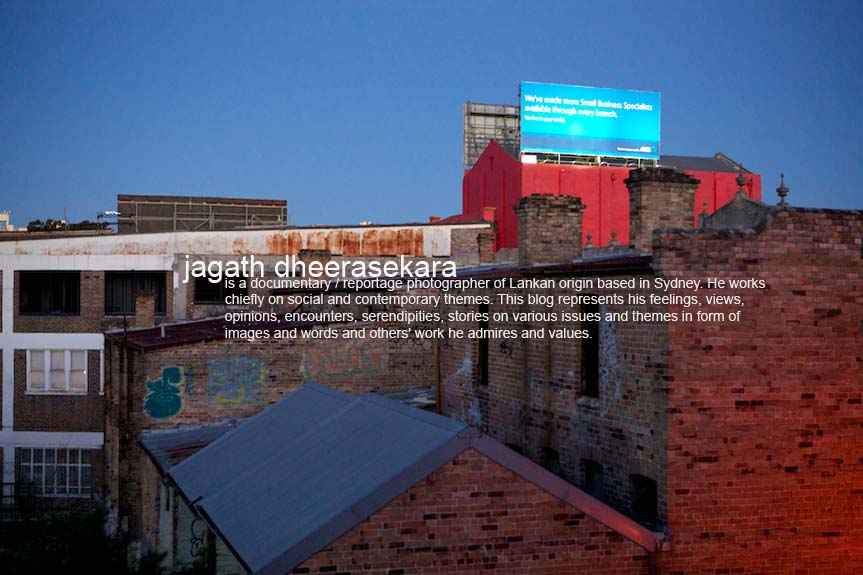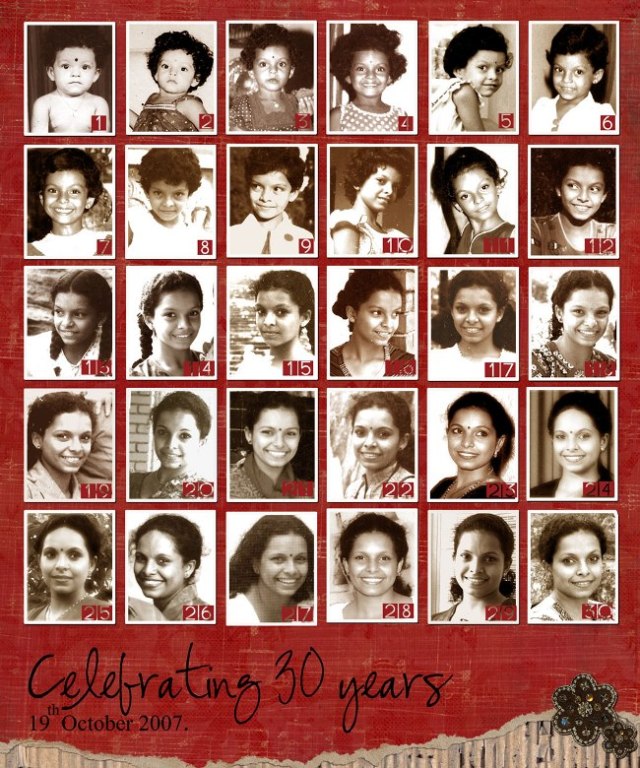............................
Following text and images in this blogpost are from
http://collidecolumn.wordpress.com/2012/05/05/when-worlds-collide-14-freezing-moments-and-defying-times-tyranny/
and copyrighted to Nalaka Gunawardene
When Worlds Collide #14: Freezing Moments and Defying Time’s Tyranny by Nalaka Gunawardene
Growing up in a very different Sri Lanka during the 1970s, I was image starved.
We had no television, no Internet, and going to the cinema was a rare treat. And cameras were uncommon – those who owned them had to carefully plan every photograph to make the best use of film rolls with a finite number of shots (12, 24 or 36).
My school teacher parents had a Kodak box camera, using which they took some home photos of my early years. Two dozen black-and-whites (some in sepia prints) survive to this day in remarkably good shape. That is all I have to show for the first decade and half of my life.
I also have a few (now fading) colour photos from my mid to late teens, taken fleetingly with cameras borrowed from friends. By then, in the 1980s, our home camera was no longer useable. And I didn’t own a basic (analog) camera until I was 25; it took me another dozen years to go digital. Yes, I know: that makes me a dinosaur of sorts…
Some of my friends have been much luckier. Buddhini Ekanayake, a Child of ’77, had a photographer father who captured all key moments of her life, and then some.
As she recalls: “My father had a passion for photography since he was a teenager. Later, with his part-time job as a local news reporter, the camera became a part of his life. So I have a whole lot of photographs from my childhood…My father took the photos and my mother preserved them in photo albums. Thanks to them, I have a huge collection of memories, emotions and untold stories bound with those thousands of photographs.”
It was partly the happy byproduct of journalism. Her father, Wijayananda Ekanayake, always had a film-loaded camera standing by to rush out at short notice. He would often develop them in his small darkroom at home.
Says Buddhini: “Those days, unlike today, one had to develop the entire film roll even for a single photo. I can remember he was using film rolls cut into short lengths of 10 to 12 frames, so he could finish them soon and send out urgent news photos. In such situations, I was the most readily available subject for him to finish the untaken frames!”
Birthday Photos
Every birthday was marked with a dedicated photo shoot, so Buddhini has an evenly spaced visual record of her life, all in black and white. When she turned 30 a few years ago, she selected one from each birthday to make a scrapbook layout. “I really enjoyed working on that layout because those pictures carried so many memories in my life,” she says.
Buddhini, who works as a freelance designer and TV producer, shares this and other visual memories on her personal website. She now continues the family tradition by photographing milestones in her own daughter’s life.
Another friend, Chulie de Silva, uses family photographs – taken over generations and decades — for chronicling tales of her colourful and far-flung family, hailing from the coastal town of Hikkaduwa. Her memories, often personalising the local history, areshared on a popular blog, evoking comments from many readers.
Especially poignant are her bittersweet memories of younger brother Prasanna, who was killed when the Indian Ocean tsunami came crashing in without warning on 26 December 2004. Suddenly, only photos and memories were left.
Within 72 hours a mutual friend, Bangladeshi photojournalist Shahidul Alam, was bearing witness to the massive devastation. He saw something extraordinary when walking amidst the ruins of Telwatte — close to where the world’s worst train accident happened, when an overcrowded train headed straight into the ferocious waves.
“I came across a family that had gathered in the wreckage of their home. I wanted to ask them their stories, find out what they had seen, but stopped when I saw them pick up the family album. They sat amidst the rubble and laughed as they turned page after page,” he recalled in the 2007 book I co-edited titled Communicating Disasters: An Asia Pacific Resource Book.
As disaster survivors sift through what is left of their homes, family photo albums are among the most cherished possessions they try to recover. This impulse cuts across cultures and other human divisions.
Helping Hands
And in this networked age, anyone can join such a quest from anywhere. In the aftermath of Japan’s earthquake and tsunami of 11 March 2011, dozens of volunteers helped hand-clean over 70,000 family photographs recovered from the debris.
All Hands Volunteers, a Massachusetts-based non-profit group, enlisted more than 200 remote volunteers to augment efforts of those on site. Some among them, who earn their living by ‘retouching’ fashion photos for glamour magazines, found it the ‘most satisfying work’ in their lives. (For details, see: http://tiny.cc/Hands)
Future disasters would probably imperil fewer family photos, as more people store and share their digitally taken photos on Facebook, Flickr, Picasa and other online platforms. ‘Digital Natives’ like my teenaged daughter rarely print their many photos.
The cyber ‘cloud’ is increasingly the giant repository of our memories. While no tsunami can wipe them out, we might one day discover the web’s own inherent hazards.
Analog or digital, physical or virtual, why are snapshots of frozen moments so powerfully evocative to all of us?
Ultimately, photos are about defying the tyranny of time and the elements. When memory fails, chemicals or digits linger a bit longer…
As Sir Arthur C Clarke once remarked, “A cheap box camera can provide for anyone of us what the greatest sculptor of the ancient world laboured for years to give Emperor Hadrian – the exact image of a lost love. With the invention of photography, some aspects of the past became for the first time directly accessible, with the minimum of selective intervention by a human mind.”
The mystique of photography – which existed even a generation ago — has all but vanished as more people carry cameras (or mobile phones with camera facility). Yet the first world’s photos were taken less than 200 years ago. Do today’s shutter-happy children realize what a small wonder they hold in their hands? I doubt it.
As Sir Arthur wrote in Profiles of the Future (1962): “Photography is such a commonplace device that we have long forgotten how marvelous it really is; if it were as difficult and expensive to take a photograph as, say, to launch a satellite, we would then give the camera the credit that is due to it.”
Nalaka can be followed : http://nalakagunawardene.com, and on Twitter: NalakaG
About Nalaka Gunawardene - as he describes ...
"A science writer by training, I've worked as a journalist and communication specialist across Asia for 25 years. During this time, I have variously been a news reporter, feature writer, radio presenter, TV quizmaster, documentary film producer, foreign correspondent and journalist trainer. I continue to juggle some of these roles, while also blogging and tweeting and column writing. There's NOTHING OFFICIAL about this blog. In fact, there's NOTHING OFFICIAL about me! I've always stayed well clear of ALL centres of power and authority."


No comments:
Post a Comment